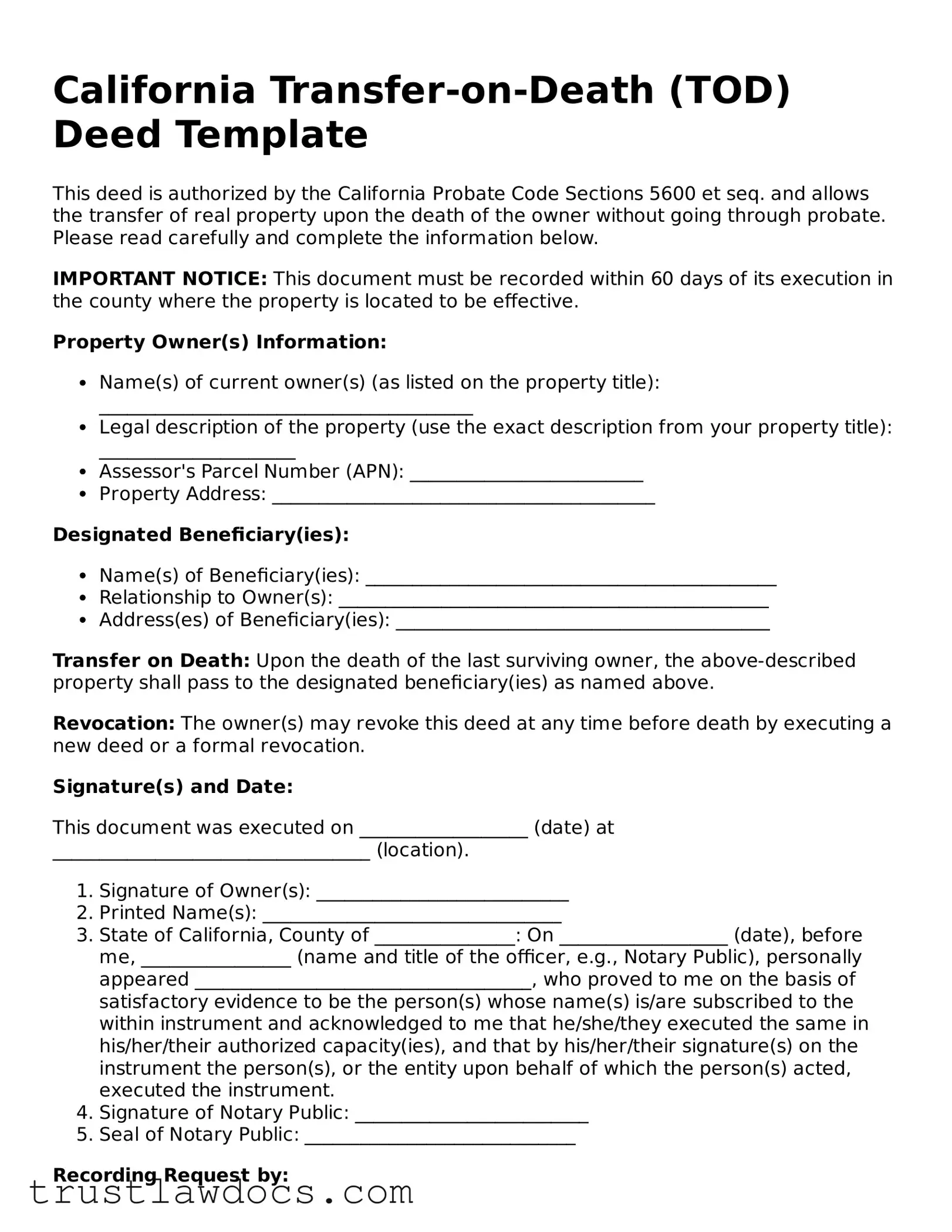What is a Transfer-on-Death (TOD) Deed in California?
A Transfer-on-Death (TOD) Deed in California allows homeowners to pass on their real property directly to a beneficiary upon their death, bypassing the often lengthy and costly probate process. This deed is a simple way to ensure property is transferred according to the homeowner's wishes without the need for a will or living trust to be involved in the exchange.
Who can use a TOD Deed in California?
Any individual who owns and has the legal right to the property in California can utilize a TOD Deed. This means the person must be mentally competent and not under undue influence at the time of signing the document. However, it's critical to note that the property must be residential and can include a single-family home, condominium, or a 1-4 unit residential building.
How can someone create a TOD Deed?
To create a TOD Deed, the property owner must complete a form that meets California's legal requirements. This includes providing a legal description of the property, naming the beneficiary clearly, and having the deed signed and notarized. After these steps, the deed must be recorded with the county recorder's office where the property is located, preferably before the owner's death.
Can a TOD Deed be revoked or changed?
Yes, a TOD Deed can be revoked or changed at any time before the owner's death, as long as the owner is mentally competent. To revoke a deed, the owner can either create and record a new deed that explicitly revokes the previous one, sign and record a form of revocation, or sell the property to someone else. Changing a beneficiary involves creating and recording a new TOD Deed.
What happens to the mortgage on the property?
If the property has a mortgage on it at the time of the owner’s death, the beneficiary inherits the property along with the mortgage. The beneficiary is then responsible for continuing the mortgage payments if they wish to retain ownership of the property. It's important to communicate with the lender to ensure a smooth transition.
Are there any tax implications for using a TOD Deed?
Using a TOD Deed may have tax implications for the beneficiary, particularly in regards to property and inheritance taxes. However, in many cases, the property's transfer through a TOD Deed allows for a step-up in basis, potentially reducing capital gains tax if the property is sold by the beneficiary. Consulting a tax professional is recommended to understand the specific implications.
Does a TOD Deed offer protection from the owner's creditors?
Upon the owner's death, the property may still be subject to claims by the owner's creditors. This means that if there are outstanding debts, creditors might seek repayment through the estate, potentially affecting the property transferred via a TOD Deed. Beneficiaries should be aware of the owner's financial situation and possible claims against the estate.
How does a TOD Deed differ from a will or living trust?
Unlike a will or living trust, a TOD Deed is a straightforward document that only applies to the specified property and does not require probate. A will, while it can dictate the distribution of various assets upon death, must go through probate. A living trust can avoid probate but requires a more comprehensive process of transferring all assets into the trust. A TOD Deed offers a simpler alternative for transferring real estate without affecting other estate planning strategies.
